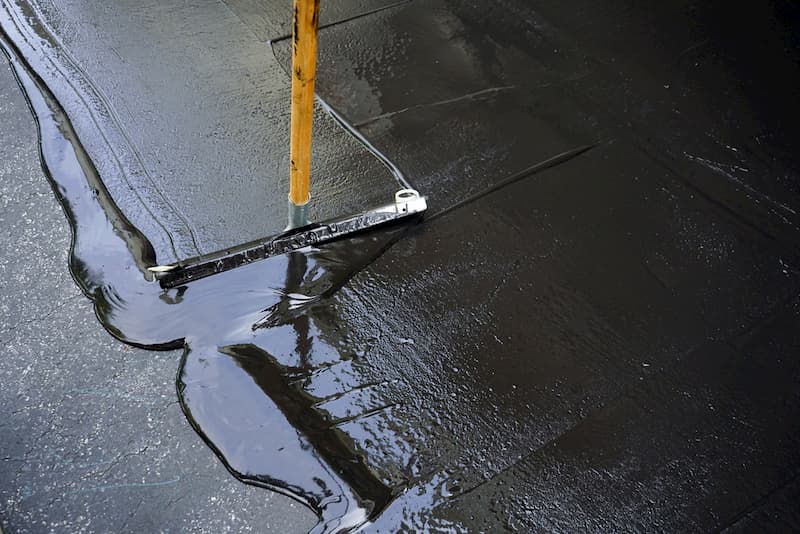Change Your Property's Visual appeals: Commercial Parking Lot Leading and Asphalt Sealing Solutions
Change Your Property's Visual appeals: Commercial Parking Lot Leading and Asphalt Sealing Solutions
Blog Article
Warm Mix Asphalt: A Sustainable Solution for Pavement
Warm Mix Asphalt (HMA) has actually emerged as a leading sustainable option for pavement options, providing a myriad of environmental benefits and cutting-edge innovations. As the need for environment-friendly construction techniques grows, discovering the subtleties of HMA's sustainability can provide important understandings right into the future of sidewalk solutions.
Environmental Advantages of Warm Mix Asphalt

Moreover, Warm Mix Asphalt helps to alleviate city heat island results. Its dark shade takes in sunshine, decreasing the quantity of warmth reflected back into the ambience compared to lighter-colored sidewalks. This can reduce ambient temperature levels in metropolitan locations, lowering the demand for cooling and eventually reducing power intake.
Additionally, Warm Mix Asphalt adds to improved stormwater administration. Its porous nature allows water to recharge and infiltrate the pavement groundwater supplies, decreasing drainage and the danger of flooding. These environmental benefits make Warm Mix Asphalt a sustainable selection for paving freeways and roads.
Energy Performance in HMA Manufacturing
Is power efficiency a critical element in the manufacturing of Hot Mix Asphalt (HMA)? Power plays a considerable role in the manufacturing of HMA, impacting both cost and ecological sustainability. One crucial element of power effectiveness in HMA production is the use of warm mix asphalt (WMA) modern technologies.
Additionally, improvements in plant innovations have led to more energy-efficient HMA production procedures. Modern plants are made with functions like recycled asphalt pavement (RAP) processing capabilities, effective burner systems, and improved insulation, all adding to power cost savings. By optimizing power use in HMA production, the sector can decrease its carbon impact while maintaining high-quality pavement products. Energy effectiveness is, therefore, a critical consideration in guaranteeing the sustainability of Warm Mix Asphalt production.
Recyclability of Warm Mix Asphalt
The recyclability of Hot Mix Asphalt (HMA) is a pivotal aspect of its sustainability and long-lasting ecological impact. HMA is one of one of the most recycled products in the United States, with over 100 million heaps of recovered asphalt sidewalk (RAP) being recycled each year in new pavement building and construction. Recycling HMA supplies numerous click for info ecological benefits, such as decreasing the demand for virgin materials, lowering power intake during manufacturing, and decreasing the quantity of waste sent to landfills.
The process of recycling HMA entails crushing the existing pavement, crushing it right into smaller pieces, and blending it with new aggregate and asphalt binder to develop a recycled mix. Generally, the recyclability of HMA plays a considerable duty in promoting sustainable techniques within the sidewalk sector.

Long-Term Performance of HMA
Asphalt pavements demonstrate longevity and resilience over an extensive period, showing the long-lasting performance of Hot Mix Asphalt (HMA) The longevity of HMA can be attributed to its capability to stand up to rush hour tons, rough climate condition, and the effects of aging. Researches have actually shown that properly designed and effectively created HMA pavements can last for two decades or even more with routine upkeep. The i was reading this secret to optimizing the lasting efficiency of HMA depends on utilizing top quality products, following best methods in building, and executing efficient upkeep approaches. Correct water drainage, routine examinations, and prompt repairs are vital for preserving the structural stability of HMA pavements in time. In addition, improvements in HMA technology, such as making use of polymer-modified binders and warm mix asphalt, have further enhanced the toughness and longevity of HMA sidewalks. By prioritizing top quality construction and maintenance practices, HMA continues to verify itself as a cost-effective and lasting remedy for resilient pavement infrastructure.

HMA: Toughness and Sustainability
Showing both durability and sustainability, Hot Mix Asphalt (HMA) has ended up being a cornerstone in the building and construction of long-lasting sidewalk infrastructures - hot mix asphalt. HMA's resilience originates from its capacity to withstand hefty tons, severe climate conditions, and high web traffic quantities, making it a trustworthy choice for roadways, highways, and flight terminal paths. The make-up of HMA, which commonly consists of go to my blog accumulations, binder, and filler, plays an important function in boosting its durability and resistance to wear and tear
Moreover, HMA's sustainability exists in its recyclability and energy-efficient manufacturing process. The capability to recycle reclaimed asphalt sidewalk (RAP) in brand-new HMA mixes lowers the demand for virgin materials and minimizes the ecological impact of sidewalk construction and maintenance. Furthermore, the energy efficiency of producing HMA hinges on its lower blending temperature levels compared to various other pavement products, leading to minimized energy consumption and greenhouse gas discharges.
Final Thought
In final thought, hot mix asphalt (HMA) uses a sustainable service for pavement with its environmentally pleasant attributes. HMA's recyclability, power efficiency in manufacturing, and long-term toughness make it a green selection for roadway construction.
HMA is one of the most recycled materials in the United States, with over 100 million heaps of redeemed asphalt sidewalk (RAP) being reused yearly in brand-new pavement building.The procedure of recycling HMA entails crushing the existing sidewalk, squashing it into smaller sized items, and mixing it with brand-new accumulation and asphalt binder to develop a recycled mix.Asphalt sidewalks demonstrate toughness and durability over an extensive duration, reflecting the long-term efficiency of Hot Mix Asphalt (HMA) Furthermore, advancements in HMA technology, such as the usage of polymer-modified binders and cozy mix asphalt, have even more improved the durability and longevity of HMA pavements. The capacity to reuse redeemed asphalt sidewalk (RAP) in new HMA mixtures reduces the need for virgin materials and lessens the environmental effect of sidewalk building and upkeep.
Report this page